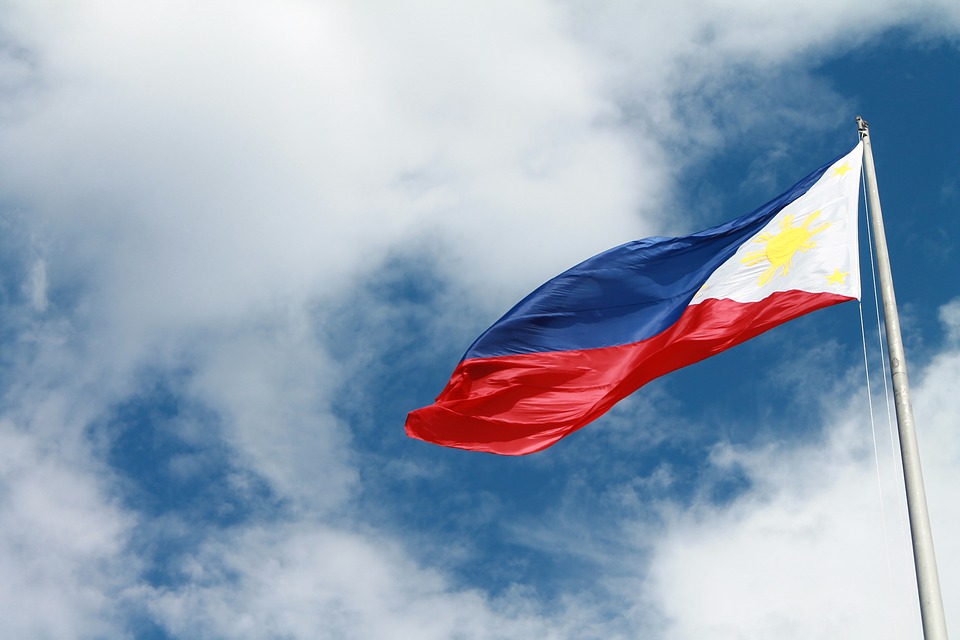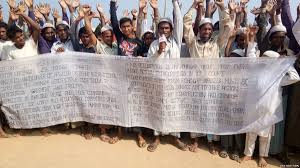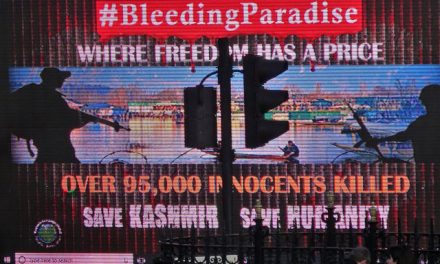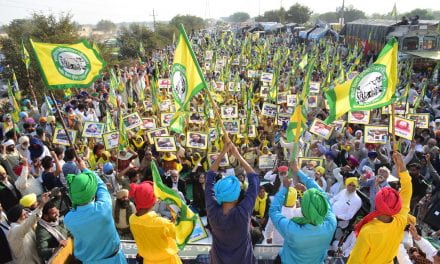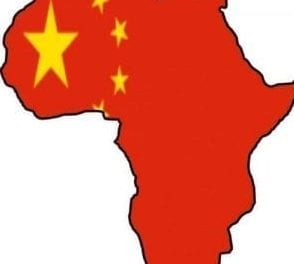By: Alison Keefner*
Earlier this month, United States President Donald Trump toured Asia, making stops in Japan, South Korea, China, Vietnam, and the Philippines.[i] At each stop, the red carpet was rolled out for the American president, who was abroad in Asia for the first time in his presidency. While many will argue which country was the most important to visit, or which leader President Trump had the most important conversations with, it was with Filipino President Rodrigo Duterte that President Trump had the most important interactions. During their meetings in Manila, President Trump and President Duterte spoke at length about the ongoing battle between the Philippine Army and IS-inspirited militant groups in a lesser-known area of the Philippines: Marawi.
On May 23rd of this year, President Duterte placed the entire region of Mindanao, of which Marawi is the capital city, under martial law in response to the murder of a police officer and two soldiers by men who were affiliated with the Islamic State (IS).[ii] The armed men were a part of the Abu Sayyaf group, led by Isnilon Hapilo, and were joined by 100 militants from another Muslim rebel group led by a man known as Maute.[iii] As government forces moved into the region to capture Hapilon and end the hostilities, the rebels captured a hospital and burned a school, homes, and churches, with the black banner of IS reportedly being lifted over the hospital.[iv] With Mindanao under martial law, Marawi was placed under virtual lockdown as the government moved in to take control of the region. As government forces continued their fight with the Muslim rebels, President Duterte extended the initial two-month period of martial law to the end of 2017.[v] While street-to-street combat was raging in Marawi and Mindanao, Air Force One touched down in Manila, President Trump and his staff in tow.
The prevalence of Muslim rebel groups in Mindanao, and in the southern parts of the Philippines as a whole, is not a new phenomenon. Marawi is the capital city of the province of Lanao del Sur in the region of Mindanao in the Philippines, a region that is the second largest island in the Philippines and home to the largest population of ethnic minorities in the South Pacific nation.[vi] In a largely Roman Catholic nation, Mindanao is comprised of a largely Muslim population and is home to the Autonomous Region of Muslim Mindanao (ARMM) in the western portion of the island.[vii] Officially established in 1988, the ARMM consists of the provinces of Baslian, Lanao del Sur, Maguindanao, Sulu, and Tawi-Tawi-, as well as the cities of Marawi and Lamitan.[viii] The ARMM was born out of the armed conflict between the national government and two Muslim rebel groups, the Manila Moro National Liberation Front (MNLF) and the Moro Islamic Liberation Front (MILF), in the 1970s.[ix] It is a fight that is still ongoing, having since been taken up by the Bangsamoro Islamic Freedom Fighters (BIFF).[x] President Corazon C. Aquino entered into peace negotiations with the MNLF in 1987, and signed into law the Republic Act 6743 in 1989, formally creating the Autonomous Region of Muslim Mindanao.[xi] These measures ended what could only be described as a horrific and bloody civil war in the southern Philippines. In 2014, the most recent pact between the Filipino government and the Muslim rebels was signed, supposedly ending the decades of violence that killed around 120,00 and displaced millions.[xii] That pact as not been upheld. As a result, this region, which has been in near constant conflict with the national government for over thirty years, has made international headlines once again.
Since the national military took control of the region in late May, as of October, more than 1,000 people have been killed in the fighting, and more than 300,000 people have been forced to flee in the city of Marawi alone.[xiii] What has since been called the Siege of Marawi ended on October 23rd, after Filipino Defense Minister Delfin Lorenzana declared that there were no more Muslim militants in Marawi. This declaration followed the siege, which began on October 16th, in which Abu Sayyaf leader Hapilon and Maute were killed in their hideout in Marawi.[xiv]
Despite having driven out the rebels from their hideouts and despite killing their two leaders, Mindanao still remains under martial law. Fighting has left the city of Marawi in ruins, a shadow of its former self. Citizens are still not allowed back into the city, and it is unclear when or if they will ever be allowed to return to what is left of their homes.[xv] As of this writing, the national government has allowed around 70,000 civilians to return to the city, but that is a small fraction of the total population that has been displaced.[xvi] The damage caused by the fighting between the government and the Muslim rebels in Marawi has been estimated at over $1 billion USD, putting a daunting effort to rebuild before the Filipino government.[xvii] However, this seems to be a rebuilding effort that the national government seems more than willing to undertake. According to the Department of Budget and Management, the national government has allocated nearly $5 billion towards rebuilding efforts in and around the city of Marawi, with a budget of nearly $10 million being earmarked for rehabilitation in Marawi in 2018.[xviii]
So why was President Trump and President Duterte’s discussion about Marawi and the situation in Mindanao such a significant highlight of Trump’s Asia trip? Primarily because President Duterte is the first foreign leader that President Trump has met personally that has successfully engaged IS-associated militants militarily. One should not forget the rhetoric that the American president used along the campaign trail during the 2016 election regarding IS, which included pushing for “extreme vetting,” proposing cutting refugee quotas, implementing the infamous “Muslim ban,” and demanding a more forceful and direct US intervention with IS in the Middle East. For President Trump, President Duterte represents the success of a strongman, a nontraditional politician using force successfully against Muslim militants via the military. President Trump congratulated the Filipino military on their success in liberating Marawi during his visit to Manila, pledging continued US support for rehabilitating and reconstructing Marawi going forward.[xix] In addition to committing additional support, the US has also pledged to improve cooperation between the two nations on counterterrorism, intelligence sharing, and joint military exercises.[xx] In President Duterte, President Trump can find a successful example of using military tactics to combat IS-affiliated militants, something that cannot be said of our allies in Western Europe.
However, if President Trump were to take the example set by President Duterte seriously, he must do so with great caution. While there are large parts of the United States that do not support President Trump and view him as an authoritarian figure that acts outside of the law, the reality is far from that. That is not the case with President Duterte. Duterte’s efforts to crack down on the drug trade in the Philippines has brought to light his darker past; a few days before Trump arrived in Manila, Duterte openly admitted to killing a man as a teenager.[xxi] This is far from the first time that Duterte has either openly admitted or has been accused of violent vigilante behavior before his ascension to the presidency, having admitted to killing suspected drug dealers himself as the Mayor of the city of Davao.[xxii] Duterte’s war on drugs has taken the lives of people as young as three years old, with the national police force considering these deaths as “collateral damage” in a larger fight. [xxiii] More than 12,000 people have been killed since his ascension to the presidency, with at least 2,355 of these deaths being committed at the hands of the national police force, which it itself being accused of formulating evidence for false crimes to justify their actions.[xxiv]The escalating violence in Duterte’s crusade to eliminate the drug trade in the Philippines is representative of a leader who is becoming increasingly willing to use brutal force to achieve his goals, either in the elimination of the drug trade, or in the elimination of IS-affiliated Muslim rebel groups. Duterte’s willingness to keep Marawi and Mindanao as a whole under martial law for so long, and to keep it under martial law after it has already been declared to be rid of Muslim rebels is indicative of a leader who is more than willing to keep and hold absolute power over a region that is no longer in crisis for as long as he wants to.
So, while President Trump is back in the United States, ready to take on tax bills and yet another attempt to repeal portions of the Affordable Care Act, one hopes that the does not take the lessons that he learned in the Philippines as a model for shaping his own policies to combat IS and IS-affiliated groups at home or abroad. While he may see in President Duterte a man who successfully rid his country of IS-affiliated militant groups through the force that he himself has so often trumpeted as necessary, President Trump and those around him need to remember that the city of Marawi lies in ruins, and that Mindanao is still under martial law despite the threat being eliminated, all because of a leader that is more than willing to impose violence on his own people to meet his own ends.
[i] Griffiths, James. “In Asia, Trump again finds success overseas easier that at home.” CNN, accessed November 22, 2017. http://www.cnn.com/2017/11/13/asia/trump-asia-trip/index/html
[ii] Villamor, Felipe. “Mindanao, a Philippines Island, Is Placed Under Martial Law.” The New York Times, accessed November 26, 2017. https://www.nytimes.com/2017/05/23/world/asia/mindanao-philippines-duterte-martial-law.html?_r=0.
[iii] Ibid.
[iv] Ibid.
[v] BBC News, “Philippines Duterte: Martial law extended in Mindanao.” BBC News, accessed November 27, 2017. http://www.bbc.com/news/world-asia-40690589.
[vi] The Editors of the Encyclopedia Britannica. “Mindanao.” Encyclopedia Britannica, accessed November 20, 2017. https://www.britannica.com/place/Mindanao.
[vii] Ibid.
[viii] ARMM. “ARMM History.” The Official Website of the Autonomous Region of Muslim Mindanao, accessed November 26, 2017. https://armm.gov.ph/discover-armm/history/.
[ix] Pike, John. “Bangsamoro / Autonomous Region in Muslim Mindanao (ARMM).” Globalsecurity.org, accessed November 26, 2017. https://www.globalsecurity.org/military/world/philippines/government-armm.htm.
[x] Ibid.
[xi] Ibid.
[xii] Ibid.
[xiii] Betterige-Moes, Maxine. “What Happened in Marawi?” Al-Jazeera, accessed November 24, 2017. http://www.aljazeera.com/indepth/features/2017/10/happened-marawi-171029085314348.html.
[xiv] Ibid.
[xv] Ibid.
[xvi] Cigaral, Ian Nicholas. “SWS: Majority of Filipinos satisfied with Duterte’s efforts to rebuild Marawi.” Philstar Global, accessed November 26, 2017. http://www.philstar.com/headlines/2017/11/25/1762380/sws-majority-filipinos-satisfied-duterte-admins-efforts-rebuild-marawi.
[xvii] Regencia, Ted. “Long road ahead for Marawi rebuilding as fighting ends.” Al-Jazeera, accessed November 26, 2017. http://www.aljazeera.com/news/2017/10/long-road-marawi-rebuilding-fighting-ends-171023145832089.html.
[xviii] Patag, Kristine Joy. “P5 Billion allotted for Marawi rehabilitation this year.” Philstar Global, accessed November 27, 2017. http://www.philstar.com/headlines/2017/10/16/1749430/p5-billion-alloted-marawi-rehabilitation-year.
[xix] Rappler. “Trump congratulates PH military for Marawi liberation.” Rappler.com, accessed November 27, 2017. https://www.rappler.com/nation/188401-trump-marawi-afp-philippines-military-congratulations.
[xx] Ibid.
[xxi] Farell, Jeff and Mythili Sampathkumar. “Trump Philippines visit: Hundreds protest in Manila ahead of ‘warmonger’ US President’s arrival.” The Independent, accessed November 23, 2017. http://www.independent.co.uk/news/world/asia/trump-philippines-visit-manila-protest-us-president-warmonger-rodrigo-duterte-a8047871.html.
[xxii] Holmes, Oliver. “Philippines president Rodrigo Duterte says he personally killed criminals.” The Guardian, accessed November 22, 2017. https://www.theguardian.com/world/2016/dec/14/philippines-president-rodrigo-duterte-personally-killed-criminals.
[xxiii] Murdoch, Lindsay. “It’s unacceptable children are deemed collateral damage in Duterte’s war on drugs.” The Sydney Morning Herald, accessed December 12, 2017. http://www.smh.com.au/world/its-unacceptable-children-are-deemed-collateral-damage-in-dutertes-war-on-drugs-20170824-gy305e.
[xxiv] Human Rights Watch. “Philippines’ ‘War on Drugs’.” Human Rights Watch, accessed December 12, 2017. https://www.hrw.org/tag/philippines-war-drugs.
*Disclaimer: The content contained in the following material is the sole ownership of the author and does not reflect the views of the Towson University Journal of International Affairs nor Towson University in any respect whatsoever.

